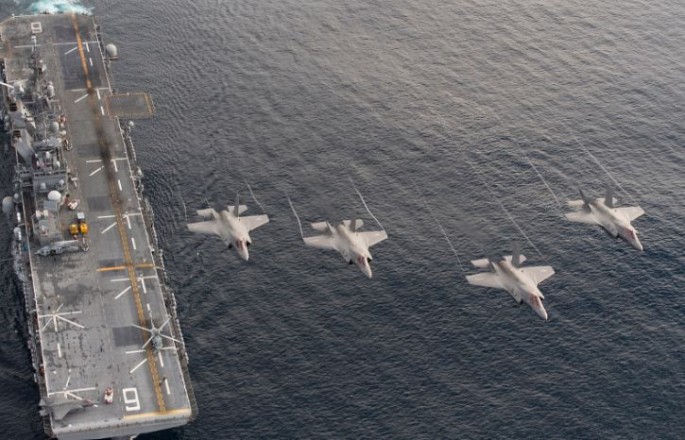The future structure of the U.S. Navy might revolve around 12 operational supercarriers backed-up by a new class of warship that made its first appearance in the Pacific in World War II -- light aircraft carriers (CVL), which were nicknamed "jeep carriers" by their crews back then.
And while the navy develops, designs and builds its new light carriers, large deck amphibious assault ships such as the America-class amphibious assault ship (LHA), and the Wasp-class landing helicopter dock (LHD) will fill the gap.
These recommendations for a new naval future fleet architecture from the Center for Strategic and Budgetary Assessments (CSBA) also state the new CVL will eventually replace the LHAs and LHDs once these two classes have reached the limit of their useful lives.
CSBA is an independent, non-profit, Washington, D.C.-based think tank specializing in U.S. defense policy, force planning, and budgets.
The fleet architecture proposed by CSBA envisions smaller but conventionally powered CVLs of 40,000 to 60,000 tons compared to the Nimitz-class carriers that displace up to 106,000 tons. CVLs will form part of the navy's Amphibious Ready Groups (ARGs).
An ARG consists of a group of warships known as an amphibious task force (ATF), and a landing force (LF) of U.S. Marines (sometimes U.S. Army soldiers). Together, these elements and supporting units are trained, organized, and equipped to perform amphibious operations.
Under the future force architecture, CVLs will provide power projection and sea control capabilities at the scale needed for day-to-day operations and for surface warfare, strike, and close air support as part of initial combat.
This will allow the navy's Nimitz-class nuclear powered carriers and the new Gerald R. Ford-class aircraft carriers to focus on high-end integrated multi-carrier operations as part of the Maneuver Force or the Northern Europe Deterrence Force.
In the meantime, the navy's LHA/LHD amphibious assault ships will be employed as CVLs carrying anywhere from 20 to 25 F-35B stealth fighters.
Light carriers hedge against the loss of a CVN by dispersing valuable F-35s among more ships, making it more difficult for the People's Liberation Army Navy (PLAN) to target its anti-ship ballistic missiles.





















